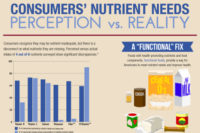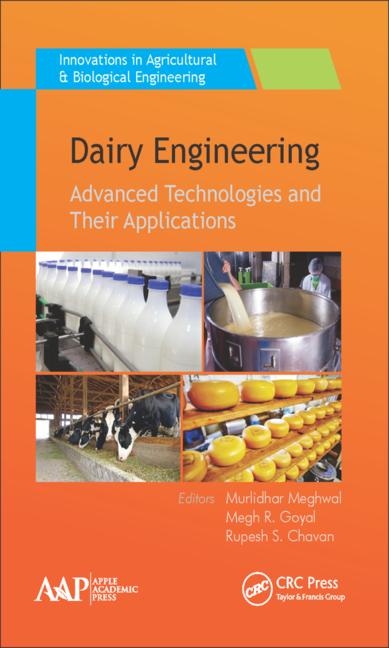Ingredients help consumers play with their food
One trend is interactive foods, as when users stir inclusions into yogurts or swirl colors into new combinations. Other trends (like clean labels) can have a domino effect on formulations. Eliminating sugar, for example, has a direct bearing on texture.


The national effort to turn around the obesity epidemic is steering children away from soft drinks and back to milk-based beverages. The popularity of Greek yogurt has given a shot in the arm to the cultured dairy category. Natural cheese is chic, as tastings and artisanal offerings take off. Ice cream processors welcome the flavor innovators.
“Some dairy categories lend themselves more to innovation and new product activity,” said Lu Ann Williams, head of research at Innova Market Insights, The Netherlands. “Cheese, yogurt, dairy drinks and drinking yogurts/fermented beverages account for well over 80% of the total number of launches. Cheese leads by a considerable margin, with nearly one-third of the total, while yogurt has 22%, just ahead of milk and dairy drinks at 18.5%.”
Innova Market Insights notes that the number of launches of lactose-free dairy products more than tripled in the five-year period ended at the beginning of 2012. Levels of interest and product activity have been particularly high; introductions marketed as lactose-free accounted for 10% of total dairy launches in the 12 months ended March 2012.
Against this backdrop, we asked ingredient suppliers for their take on the dairy foods industry. Three influences kept popping up:
1. Consumer trends (healthy eating/aging well)
2. Economic trends (keeping food affordable)
3. Ingredient trends (including new colors, flavors and inclusions)
A focus on calories, not fat
Calorie reduction has begun to hinge more on shifts in sweeteners rather than fat reduction, which can be a bigger challenge with dairy products since so much of the organoleptic qualities of dairy are based on the fat structure and content. Natural sweeteners such as stevia have been a boon.
“Since the first stevia-based sweeteners received GRAS notification approvals in 2008, there’s been a great amount of attention to the formulation of dairy-based beverages — flavored milks, smoothies, drinkable yogurts — and to yogurts,” said Ivan Gonzales, marketing director for dairy at Ingredion Inc. (formerly Corn Products), Westchester, Ill.
“Although the standard of identity for flavored milk specifies nutritional sweeteners, recent reports have shown that flavored milks are much better accepted than white milks in school lunches. Stevia extracts work extremely well in dairy-based products,” Gonzales said.
Crunch goes the dairy
“The biggest trend in dairy is ingredient-related: the popularity of crunchy inclusions for yogurt,” said Tom Vierhile, Innovation Insights director for Datamonitor Inc., Canandaigua, N.Y.
Vierhile also points to trending exotic flavors that appeal to consumers’ more worldly and informed palates. These include key lime, date, fig and black cherry. While these flavors typically show up in yogurt and ice cream, they are appearing in dairy-based dessert categories (such as cheesecake) and they have potential for flavored milk products.
Another movement noticed by Vierhile is that of swirls and layers in yogurts, puddings and frozen desserts.
“Swirls are a fun approach to inclusions as well as color, since the consumer can mix the different colors to create a third color,” Vierhile said.
James Bruce, vice president of sales for Dallas-based Pecan Deluxe Candy Co., said that bakery inclusions in dairy continue to appeal to consumers, and seasonal flavors drive impulse sales. Barks — candy pieces interspersed in a chocolate coating and ground — increasingly are used to replace variegates due to the particle distribution giving full visual and flavor appeal throughout the product. Barks can also be used as coatings for frozen dairy novelties.
“Decadent premium and super-premium flavors will outpace other segments in the ice cream case,” Bruce said.
Suppliers told Dairy Foods that there is plenty of opportunity to expand flavors from the more ethnic/exotic realms into savory dairy. Khaled Zitoun, chief technology officer for Kerry Ingredients & Flavors Inc., Beloit, Wis. said, “More broadly, [flavor] trends include natural and artisan flavors and authentic flavor profiles such as Mexican and Italian cheese, and exotic and superfruits. Decadent/indulgent flavors are also proving popular.”
At Flavorchem Corp., Downers Grove, Ill., marketing manager Ed McIntosh described the short pathway such flavor concepts now take to reach American consumer awareness.
“Roadside vendors offering beverages such as horchata, or those flavored with ingredients such as tamarindo (tamarind) and limosa (lime) have resulted in the development of our new flavors. We have also spotted flavors such as guava, mango, piña colada, and chocolate with cinnamon in a wide range of dairy products at [Latin American] shopping centers, all of which we now offer to our customers. Cajeta is our newest Hispanic flavor which is traditionally made with goat’s milk, sugar and vanilla and provides for a very rich and deep flavor.”
Naturally, the trend is natural
“There seems to be an increase in demand for natural flavors,” said Danielle Durso, marketing coordinator for David Michael & Co., Philadelphia. “Many food companies are looking to promote all-natural ingredients on their label and thus are looking to replace the artificial flavors they currently contain.”
According to Mike Neu, senior vice president of cultures and enzymes for Chr. Hansen Inc., Milwaukee, “The most important focus areas for the dairy industry are food safety, the need for continual innovation, and health and wellness. And ‘back-to-basics,’ clean labels and natural ingredients are the three biggest buzz terms in the dairy industry today.”
McIntosh cautioned that ingredients for natural/healthful functionality carry challenges in their own right.
“Although these additives can provide health benefits, they usually create off-flavors and/or odors. If foods do not taste good, regardless of their health benefit, it is unlikely that they will succeed in the market. The right masking agents can offer a solution to this issue and provide dairy processors the freedom to use functional ingredients.”
Virginia Dare’s Marketing Insights has found that consumers are gravitating toward products that are labeled “natural” in one form or another. Anton Angelich, Group Vice President of Marketing for the Brooklyn, N.Y.-based company said, “Virginia Dare sees a significant shift towards the use of fewer and simpler-sounding ingredients in new products, and natural flavors.”
He described a consumer reading a label like this: “I may not know all the ins and outs of what is good or not, but if it is natural, it is probably better for me than a product that lists things on a label panel [that] I don’t know what they are or can’t even pronounce.”
Thus, the word “natural” on a label “is kind of like a safety umbrella,” Angelich said.
Ardy van Erp, regional marketing manager of dairy for DSM Food Specialties Inc., Logan, Utah, said that with yogurts and yogurt drinks showing up on more consumer grocery lists, the range of cultures needed likewise expands. The challenge includes developing culture systems that can create product flavors and textures specific enough to serve to specific cultural preferences.
“A range of cultures serves the categories of set, stirred and drinking yogurts globally, but at the same time we have cultures for a range of local specialties — for example dahi in India,” van Erp said.
Goat’s milk has been a big growth area in dairy products. Although not free of lactose, goat-milk dairy products seem to be much more easily tolerated with persons having sensitivity to lactose. van Erp raised the issue of lactose intolerance as a growing problem. By some estimates, more than half the global population is either lactose-sensitive or lactose-intolerant. Rather than having them miss out on the important benefits of dairy, lactase solutions to fit all formulations are becoming a significant growth area in the dairy ingredient industry.
New methods call for new ingredients
From a technical standpoint, one of the more forward-moving trends in dairy products is that of cultures and enzymes.
“There is an ever-present need for ingredient innovation to include new technologies and process improvements,” said Ingredion’s Gonzales. Thus, suppliers are working more closely than ever with manufacturers to tailor-make successful solutions that are custom-fit to the immediate requirements of specific lines.
“Customization in ingredients is typically thought of as being flavor- or texture-oriented, but new technology in food processing is pushing ingredient makers to far more complicated customization to conform to the chemistry and physics in modern processing,” said Durso of David Michael & Co.
With cultures, which are live, and enzymes, which typically have delicate protein-based chemical structures, the knowledge curve can be formidable.
“Culture systems continue to evolve from processor-produced bulk starter to culture-house produced, direct-inoculation cultures,” said Chr. Hansen’s Neu. “This has been the trend for the past 20 years, but we’ve seen an acceleration of this trend over the past three years. In the yogurt area, processors continue to request culture systems that deliver even higher mouthfeel with mild flavor.”
Sudden changes in method can be demanded in the wake of fast-shifting and growing trends. One such example, pointed out by Steve McGowan, senior food technician for Bridgeton, Mo.-based Sensory Effects Flavor Systems Inc. is the recent filing of lawsuits which seek to force the ready-to-eat and frozen Greek yogurts to be made in the traditional method, instead of the new more cost-effective methods that have been developed.
“Purists do not like that the products are achieving the higher protein levels by adding protein, instead of through the straining methods traditionally used,” he said.
McGowan discussed the holistic approach necessary for developing flavor systems that do not impact other aspects, such as texture, economics and shelflife.
“One major problem manufacturers face is profitability in this time of rising costs. By creating a system of textured variegates and ‘unique textured flakes’ in a low-melt inclusion line, it’s possible to combine in one item the benefits of both the inclusion and the variegate in traditional offerings. The addition of low-melt flakes can provide an exciting taste experience when consumers bite into the flakes — which look like traditional chocolate flakes — but can come in flavors like lemon crunch.”
Colorants have been paid particular attention in the drive for naturalness.
“The macro trend in food colorants across all food categories is the continued move away from synthetic colorants and toward naturally derived food colorants,” said Winston Boyd, vice president and chief chemist for Lawrence Foods Inc., Elk Grove Village, Ill.
Marketers of organic dairy brands had been constrained in their use of colors, but that now has changed. Campbell Barnum of D.D. Williamson, Louisville, Ky., noted that 100% organic cheddar cheese is now possible thanks in part to the availability of unique, certified-organic annatto extracts.
“With the Southampton-based de facto ban on artificial/synthetic colors in Europe, many food and beverage products have toned down to earthier, less brilliant colors,” Barnum said. “Next, we see yellow trending from a lime to a honey background. We see orange shifting from a brown to a peach hue.”
The importance of stabilizers, emulsifiers
There’s no overestimating the importance of stabilizers and emulsifiers when it comes to dairy products, especially those that are liquid or semi-liquid.
“The selection and use of stabilizers and emulsifiers is critical to the texture and stability of dairy products,” said Donna Klockeman of TIC Gums, White Marsh, Md.
When removing sugar or fat from liquid products (milks and milk alternatives) there are important texture attributes associated with sugar, plus the fat must be replaced.
Klockeman said examples of these characteristics or attributes include mouth coating, dissolvability and mouth clearing. The ability of hydrocolloid stabilizers to influence the thickness, flow characteristics and film-forming ability contribute to these texture attributes.
The replacement of sugar is even more critical in frozen products because of the role sugar plays in managing water and the development of ice crystals. When sugar is replaced in these products, alternative dissolved materials must be added to insure that the reduced-sugar or sugar-free product does not contain significantly more water.
There are many options to replace these dissolved solids, such as the soluble fibers inulin or gum acacia, or polydextrose, maltodextrins and sugar alcohols. Often a combination of ingredients is used to replace the sugar components in sugar-free or no-sugar-added frozen products.
“The ability of hydrocolloid stabilizers to influence the thickness, emulsification and film-forming characteristics of the liquid product prior to freezing will also contribute to the texture attributes of frozen products. The same hydrocolloid stabilizer systems can be used to deliver very similar texture characteristics in these reduced sugar products,” Klockeman said.
Amanda Higgins, senior food chemist for Gum Technology Corp., Tucson, Ariz., also pointed out the role of stabilizers and emulsifiers. They “improve textural qualities and stability issues by providing a creamier mouthfeel and reducing graininess in yogurt.” The ingredients also reduce ice crystal growth and create freeze-thaw stability in ice creams and frozen yogurts, she added.
“Stabilizers also prevent syneresis and increase the shelf life of many dairy products. Gums and gum/starch blends can also play a role in the nutrition of dairy foods and beverages because they assist in cutting back on high-fat ingredients without losing texture or mouth-feel in products, such as low-fat sour cream and fat-free yogurt,” Higgins added.
Heading into 2013, the word for formulators of dairy foods and beverages is “collaboration.” Just as dairy processors study consumer trends in their development of new products, they also need to collaborate with ingredient suppliers so that the foods perform as expected.
Ingredient Suppliers Are Talking About:
• Using alternative sweeteners
• Reducing calories, not fat
• Mixing bakery-inspired inclusions into ice cream
• An interest in ethnic or exotic flavors
• A move away from synthetic colors
Dairy marketers tout low-fat content
Claim Percentage
Naturally low in fat /reduced fat 30%
Digestive/gut health claim 25%
Free from additives and preservatives 12%
Natural 6%
These were the most popular health-related benefits claimed by makers of dairy products in 2012.
Source: Innova Market Insights, The Netherlands
Looking for a reprint of this article?
From high-res PDFs to custom plaques, order your copy today!








